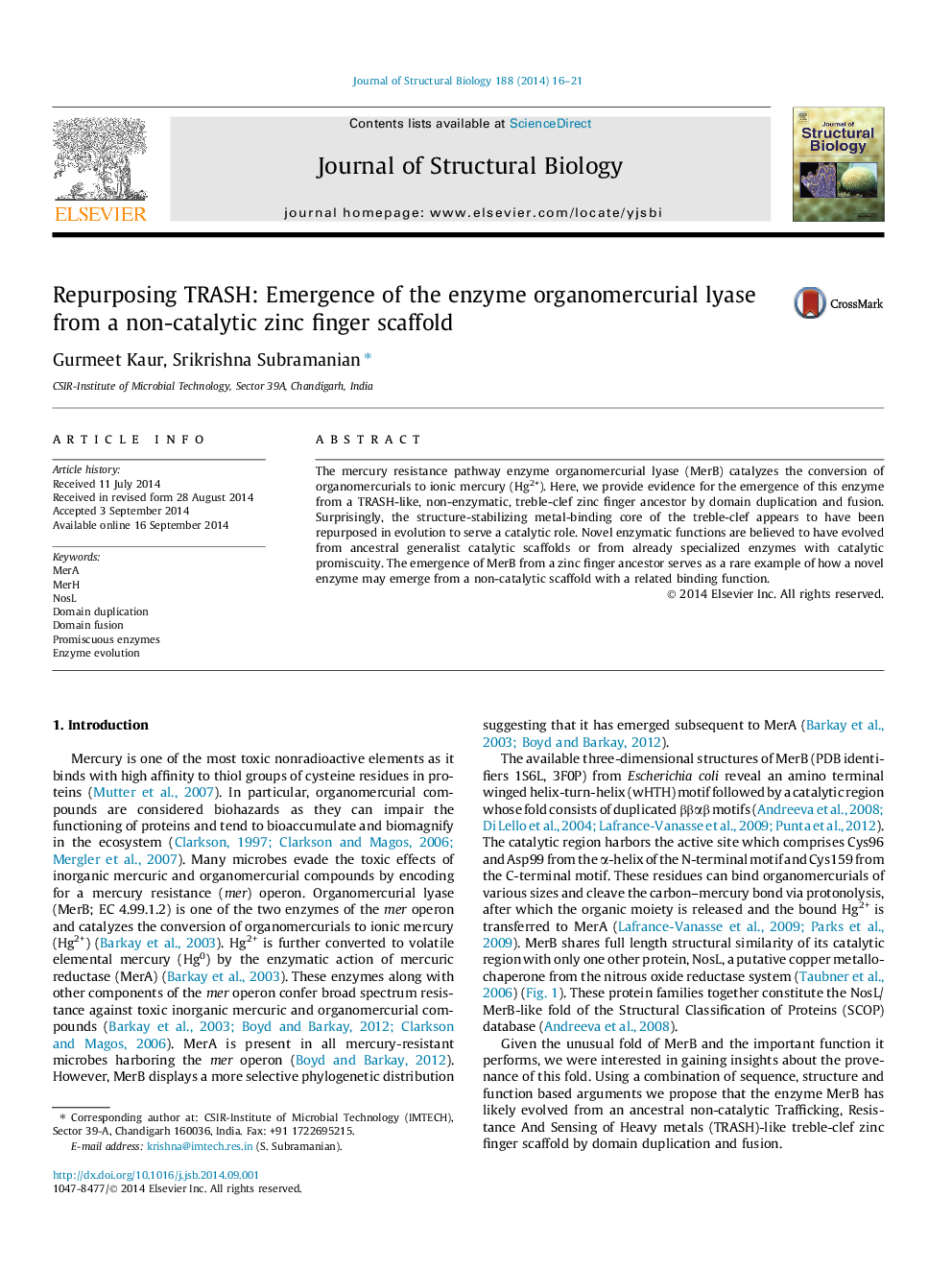| Article ID | Journal | Published Year | Pages | File Type |
|---|---|---|---|---|
| 2828470 | Journal of Structural Biology | 2014 | 6 Pages |
The mercury resistance pathway enzyme organomercurial lyase (MerB) catalyzes the conversion of organomercurials to ionic mercury (Hg2+). Here, we provide evidence for the emergence of this enzyme from a TRASH-like, non-enzymatic, treble-clef zinc finger ancestor by domain duplication and fusion. Surprisingly, the structure-stabilizing metal-binding core of the treble-clef appears to have been repurposed in evolution to serve a catalytic role. Novel enzymatic functions are believed to have evolved from ancestral generalist catalytic scaffolds or from already specialized enzymes with catalytic promiscuity. The emergence of MerB from a zinc finger ancestor serves as a rare example of how a novel enzyme may emerge from a non-catalytic scaffold with a related binding function.
